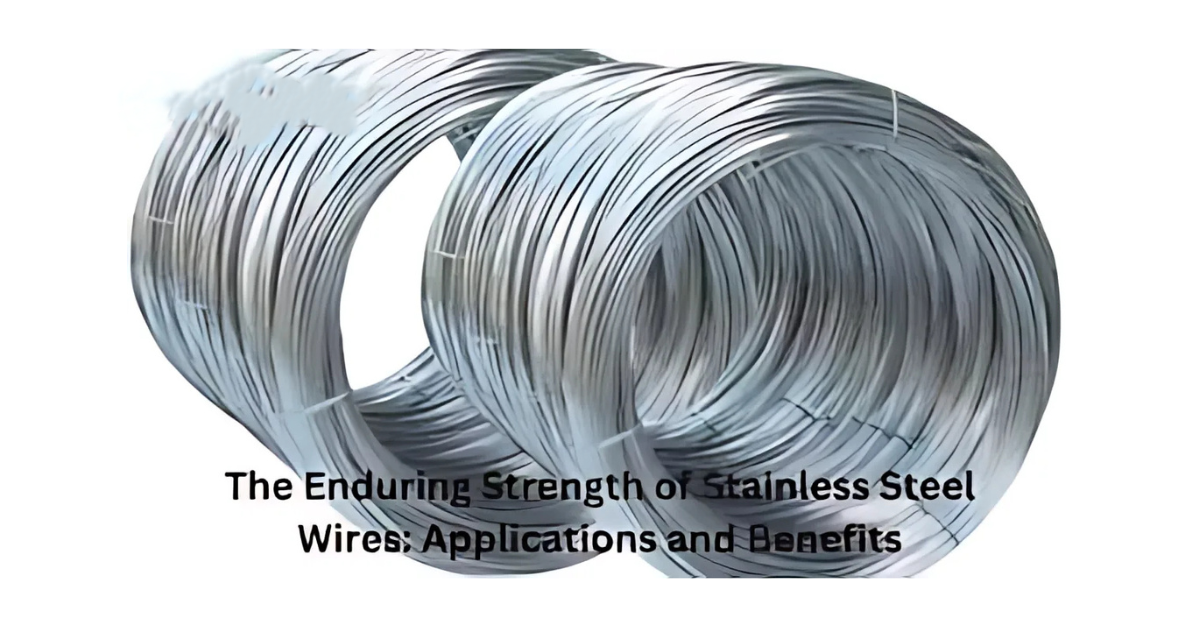The future trends in the development of stainless steel wires and cables are shaped by advances in materials science, technology, and growing demands for enhanced performance in a variety of industries. Below are the key trends likely to shape the future of stainless steel wire and cable production:
1. Enhanced Corrosion Resistance
- Developing High-Performance Alloys: Stainless steel wires and cables are increasingly being made from alloys that offer improved resistance to corrosion in harsh environments, such as in offshore, marine, and chemical processing industries. Innovations in alloying elements and coatings are expected to further enhance their durability, particularly in highly corrosive environments.
- Nanotechnology Coatings: The use of nanotechnology for developing advanced coatings can significantly improve the corrosion resistance of stainless steel cables, particularly for applications in highly acidic or saline environments.
2. Increased Demand for Lightweight and Flexible Cables
- Lightweight Solutions: While stainless steel is traditionally valued for its strength and durability, there is an increasing focus on developing lightweight cables without compromising strength. Using advanced alloys or hybrid materials, manufacturers can make stainless steel cables more flexible and lightweight, expanding their application in aerospace, automotive, and consumer electronics.
- Flexible Stainless Steel Cables: The development of more flexible cables will allow stainless steel wires to be used in applications that require high flexibility, such as robotics, industrial machinery, and other automation systems.
3. Integration with Smart Technologies
- Smart Cables: The future of stainless steel cables includes their integration with smart technologies, enabling real-time monitoring of conditions such as temperature, pressure, or stress within the cables. This integration can help detect wear and tear or early signs of failure, allowing for predictive maintenance in critical applications, such as power plants, manufacturing, and oil exploration.
- Sensors in Cables: Embedded sensors in stainless steel cables will help track the physical state of the cable and alert systems to performance issues. This will be critical for industries where high performance and continuous uptime are essential, like the aerospace, military, and automotive sectors.
4. Improved Electrical Conductivity and Performance
- Enhanced Conductivity: Research into alloys and wire treatments is focused on improving the electrical conductivity of stainless steel cables. By combining stainless steel with other metals, manufacturers aim to improve the wire’s ability to conduct electricity while maintaining its strength and resistance to corrosion.
- High-Temperature Conductors: As electronics, electric vehicles, and industrial systems operate at higher temperatures, stainless steel cables are being engineered to handle higher electrical loads without losing efficiency or safety.
5. Sustainable and Eco-Friendly Production
- Recycling and Reusability: There is a growing emphasis on making stainless steel wires and cables more sustainable by improving recycling processes. Manufacturers are looking for ways to reduce waste and create more environmentally friendly production processes.
- Reduction in Energy Consumption: Innovations in the manufacturing process aim to reduce energy consumption in stainless steel cable production, leading to greener manufacturing methods that support environmental sustainability.
6. Advances in Automation and Manufacturing
- Automation in Production: The development of automated manufacturing techniques for stainless steel wires and cables will increase efficiency, reduce costs, and improve product quality. Automated production lines will allow for greater precision in the creation of cables with complex designs, helping meet the diverse needs of modern industries.
- 3D Printing for Prototyping: In the future, 3D printing technology could be employed to quickly prototype and test new stainless steel cable designs, making the design process faster and more cost-effective.
7. High-Performance in Extreme Conditions
- High-Temperature and High-Pressure Cables: As industries like oil, gas, and aerospace push for more extreme-performance materials, stainless steel cables will continue to evolve to withstand extreme temperatures, high pressures, and high-stress environments, such as in drilling, deep-sea operations, and spacecraft.
- Cryogenic Applications: Stainless steel cables are expected to be developed for use in cryogenic environments (extremely low temperatures), where they will maintain their strength and durability in storage and transport of liquid gases and scientific applications in space exploration.
8. Customization and Tailored Solutions
- Tailored Design for Specific Applications: The growing need for specialized solutions will drive the trend of customizing stainless steel wires and cables for specific applications. Whether for use in medical devices, aerospace, automotive, or robotics, cables will be engineered to meet unique requirements in terms of size, strength, flexibility, and resistance to environmental factors.
- Modular Cable Designs: Manufacturers are moving towards creating modular cable designs that can be adapted for multiple uses, reducing manufacturing time and allowing for the customization of wire properties based on the application.
9. Higher Standards and Regulations
- Compliance with Industry Standards: As industries evolve, there will be a push for higher standards and regulations to ensure the safety and performance of stainless steel wires and cables. Certification bodies will require more rigorous testing and stricter compliance, especially for cables used in high-risk industries such as energy, aviation, and healthcare.
10. Enhanced Performance in Communication and Data Transmission
- High-Speed Data Transmission: Stainless steel cables, especially in hybrid configurations, will continue to be used in data transmission systems. With the rise of 5G and advanced communication technologies, stainless steel cables will be developed to handle the increasing demand for faster data transmission and improved signal integrity.
Conclusion
The future of stainless steel wires and cables is moving towards improved durability, efficiency, customization, and integration with emerging technologies. With a focus on environmental sustainability, advanced materials, and automation, stainless steel wire and cable production will continue to evolve to meet the ever-changing demands of various industrial, commercial, and residential applications. These developments will allow industries to improve productivity, reduce operational costs, and meet the increasing need for robust, high-performance cable systems in increasingly complex environments.
Hashtags
#AdvancedStainlessSteelWires #NextGenCableMaterials #SmartWireDevelopment #HighStrengthSteelWires #CorrosionResistantWires #AlloyInnovationInCables #EcoFriendlyCableManufacturing #SustainableWires #GreenWireDevelopment #RecyclableStainlessSteelCables #LowCarbonFootprintWires #SustainableCableSolutions #MiniatureWiresForElectronics #LightweightCableSolutions #CompactStainlessSteelCables #SlimWireDesign #MiniaturizationInCables #EfficientCableDesign #HighDurabilityWires #PerformanceEnhancementsForCables #LongLastingStainlessSteelWires #ImprovedCableStrength #DurabilityInExtremeEnvironments #HighPerformanceStainlessSteelCables #SmartWireTechnologies #IoTEnabledCables #ConnectedStainlessSteelWires #IntelligentWiringSolutions #SensorIntegratedCables #WirelessTechnologyInWires #AutomationInWireManufacturing #RoboticCableProduction














